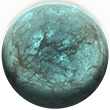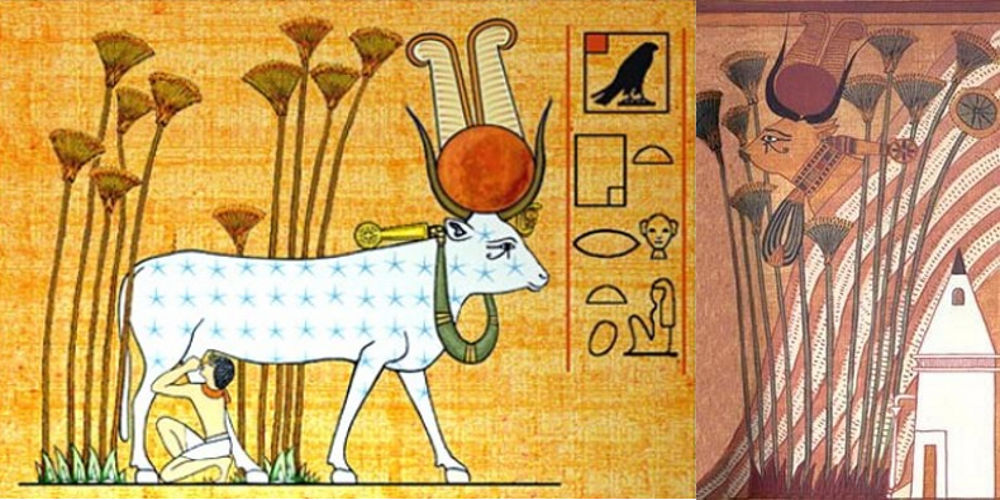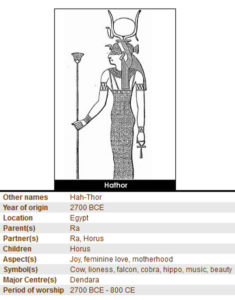What was this strange Egyptian goddesses with so many different titles, names and imagery?
Hathor, Lady of Amentet, the Dweller in the Great Land, the Lady of Ta-Tchesert, the Eye of Ra, the Dweller in his breast, the Beautiful Face in the Boat of Millions of Years, the Seat of Peace of the doer of truth, Dweller in the Boat of the favoured ones
The Egyptian Book of the Dead | Ancient Texts
What was this unusual cow Goddess Hathor?
What was the suckling/milking imagery of Hathor and other Egyptian Goddesses all about?
Why and what was a nursing tree deity?
What was Hathor mythology?

Listed and quoted below are some of the more usual and standard theories of what the Hathor mythology represented. Then after those there are some more alternative explanations about what Hathor may have been or was, from other writers, sites and books.
- Was Hathor the Milky Way?
- Was Hathor the planet Venus and part of the Eye of Ra?
- Was Hathor a plasmoid of the planet Venus?
- Was Hathor a dusty ring around planet Earth?
- Was Hathor the Heliosphere?
Hathor - sky goddess or the Milky Way
Hathor (Pronounced Hah-Thor) (Egyptian for house of Horus) ... Hathor was an ancient goddess, and was worshipped as a cow-deity from at least 2700 BC, during the second dynasty.
Hathor | One Evil
Hathor is one of the most famous goddesses of Ancient Egypt. She was known as "the Great One of Many Names" and her titles and attributes are so numerous that she was important in every area of the life and death of the ancient Egyptians.
She was originally a personification of the Milky Way, which was considered to be the milk that flowed from the udders of a heavenly cow (linking her with Nut, Bat and Mehet-Weret). As time passed she absorbed the attributes of many other goddesses but also became more closely associated with Isis, who to some degree usurped her position as the most popular and powerful goddess.
Hathor | Ancient Egypt Online
Her name refers to her position as the celestial cow which encircles the sky and hawk god, Horus. She was also a goddess of royalty and since the pharaohs were seen as related to Horus, she was seen as the divine mother of the reigning pharaoh. Her cult was centered in Dendera and was led by priests who were also dancers, singers or other artists, for she was a goddess of art as well. Her priests were also oracles and midwives. She was the mother of Ihy and of Horus. Some academics have suggested a sacred marriage between Hathor and Horus as part of the annual festival at Luxor and Edfu.
Hathor | Thelemapedia
A stone urn recovered from Hierakonpolis and dated to the first dynasty has on its rim the face of a cow deity with stars on its ears and horns that may relate to Hathor's, or Bat's, role as a sky-goddess.
Early Depictions - Hathor| Wikipedia
Hathor - planet Venus as the Eye of Ra
 The Saturn Myth, Saturn Configuration or some variations of Electric Universe theory mythology suggest that Hathor may have physically been:
The Saturn Myth, Saturn Configuration or some variations of Electric Universe theory mythology suggest that Hathor may have physically been:
A second basic tenet would emphasize the comparative method. Simply stated, no ancient myth or primary cultural institution is fully understandable in isolation. Egyptian myth, to take but one example, is essentially incomprehensible apart from detailed analysis of analogous themes and motifs from ancient Mesopotamia and the New World, both of which provide the indispensable link to the early astronomical traditions that are all but lost in Egypt itself (Horus's identification with the Morning Star and Mars offers a notable exception in this regard and forms a close analogue to the Pawnee traditions surrounding the red planet).
Hathor's identification with the "Eye of Ra," for example, can only be understood by reference to the widespread idea whereby Venus once formed the central "eye" of the ancient sun god. Note further that Hathor's name, which signifies "House of Horus," captures perfectly the essence of the relationship of Venus and Mars as illustrated in figure one. The planet-goddess Hathor, as the "Eye of Ra," literally housed the warrior Horus.
The Saturn Myth | Maverick Science (Ev Cochrane)
As a mother, since she enclosed the sky, she was seen as the mother of Horus. Symbolically she became the divine mother of the pharaoh, who was identified as Horus. Hathor was sometimes said to be the mother of Isis, although it was more accurate to say she was her mother in law. As Horus was also said to be the son of Ra, Hathor was identified as Ra's wife (Ra created her in a non-sexual manner), gaining the title Mistress of Heaven. Having been identified as Ra's wife, it was said she arose from Ra's tears, and thus was identified as the Eye of Ra.
Hathor | Ancient Egypt Wiki
Hathor - plasmoid of Venus

Jno Cook runs the Saturnian Cosmology site, which is the free online version with the latest updates and research of his Recovering the Lost World books and ebooks.
Cook has suggested about the Egyptian goddess Hathor:
'Hathor' is also the name of the center of the south sky in coptic.
Hat'hor means 'the seat of Horus' where 'Horus' means 'Lord.'
As 'Sekhmet' she is probably the plasmoid of Venus.
Hathor | Recovering the Lost World (Jno Cook)
Hathor - dusty ring around the planet
Gary Gilligan in his God King Scenario, with a GKS website and books, explains what Hathor was as:
Most attempt to attribute the goddess Hathor (Sumerian goddess Ninhursag) to a planetary body this is incorrect. Think about it for a moment, any bouts of planetary chaos involving earth would obviously involve tons and tons of dust & debris – which would naturally settle down to form an enormous ring around earth’s girth (most planets today still have rings). Are we presume ancient cultures ignored such a phenomena? No of course not – It was deified as the “Mother Goddess,” the “Lady of the Sky” and again, quite naturally since the divine god king planets (& many other bodies) were seen “housed” by and suckling milky/debris from this band of dust (just as Saturn’s moons suck material from its rings) she was naturally attributed bovine attributes. Hence, titles such as…..
Goddess of fertility, children and childbirth
The Mothers of Mothers, the celestial nurse
Goddess of the dead, lady of the west
The mistress of life
The great wild cow
The golden one, etc.There aren’t many epithets that don’t tie in with my identification!
The name Hat-hor means “House of Horus” and since the king was Horus god on earth Hathor was said to be the house of the king/Horus. A title that we simply take at face value.
Isis was the dusty ecliptic. Isis and Hathor became interchangeable mothering goddesses as the dusty ecliptic crossed earth’s equatorial rings throughout the day and moreover throughout the year. Both housed and many times gave birth to the kingly planets exactly as recorded.
Hathor | God King Scenario (Gary Gilligan)
Hathor may be the cow goddess who is depicted from an early date on the Narmer Palette and on a stone urn dating from the 1st dynasty that suggests a role as sky-goddess and a relationship to Horus who, as a sun god, is "housed" in her.
Hathor | Wikipedia
Hathor - the Heliosphere
 The God Electric site and theory is described as investigates and explains hieroglyphs deciphered using special characteristics of the animals and plants on Earth to show functions and natural principles of the Universe.
The God Electric site and theory is described as investigates and explains hieroglyphs deciphered using special characteristics of the animals and plants on Earth to show functions and natural principles of the Universe.
GodElectric explanation for what the Hathor mythology represents as:
Hieroglyphs for Hathor are the following two hieroglyphs combined - Enclosure and Peregrine Falcon
Hathor is the Heliosphere, described by the hieroglyphs as the Peregrine Falcon inside an enclosure, meaning the Electric Field Enclosure.Her defensive horns symbolize the protection of the heliospheric plasma sheath, also known as defender of the Sun God Ra.
Being Female she is part of the circuitry of the cosmos and is closely related to Amentet.
Hathor | God Electric
The feminine goddess par excellence in ancient Egypt, Hathor was a pre-Dynastic goddess who gained enormous popularity early on. Her name is translated as "the House of Horus", which may be a reference to her as the embodiment of the sky in her role of the Celestial Cow, being that which surrounds the decidedly sky-oriented hawk-deity, Horus, when he takes wing.
... Hathor is also known as the "Lady to the Limit" ("limit" meaning the edges of the known universe) and the "Lady of the West"; her image is sometimes seen on funerary depiction as she stands behind Osiris, welcoming the dead to their new home. Other titles of Hathor include the "Divine (or Celestial) Cow", "Mistress of Heaven", and "Lady of Gold"
Hathor | Encyclopedia Mythica









